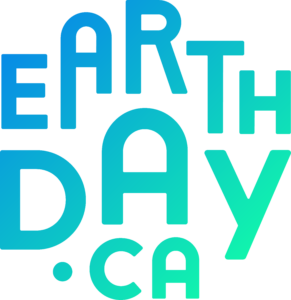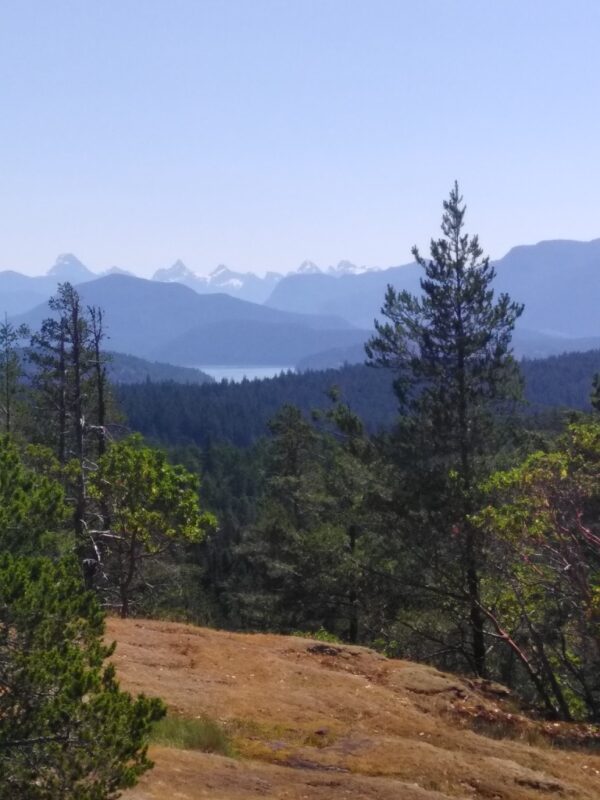Jillian Kaster is a mother of two who lives in Toronto. Along with her family, she is trying to take personal action to decrease her carbon footprint. She joined the University of St. Michael’s College community in March as content specialist.
When I was a kid, Earth Day was a celebration. It was a day to thank the planet for supporting life, spend time appreciating nature, and learn about how we could respect our planet by conserving water and recycling. It’s been three decades since I was a child, and in that time, we have burned more than half the fossil fuels in human history.1 Forget recycling: we are racing headlong into a climate crisis that poses unimaginable risks to our planet. Now Earth Day has become a time to grieve and to reckon with our actions that have led to this point.

Each of us has a moment when climate change became real. For me, this moment was when the UN Intergovernmental Panel on Climate Change released its unprecedented report in 2018 stating that our planet only had 12 years to reduce carbon emissions to avoid the worst-case devastation caused by climate change. I was on maternity leave with my then one-month old daughter. I’m still grappling with the implications of this report and what it means for my children’s future. I know their childhood will be different from my own: from methods of travel and their access to food to having to dealing with extreme weather and their relationship with nature.
Almost every day I take my kids outside for fresh air. Time spent in nature is a highlight for all of us. I appreciate stepping away from my phone or computer and watching them engage with the world around them. Kids understand instinctively that we live in a world of natural marvels. They inspect different rocks and decide which are worthy of taking home, wave to squirrels, smell flowers and bring me ladybugs or, less to my pleasure, wriggling snails and worms. We loved playing on the swings and slides in the unseasonably warm weather this spring, but I wonder how many more days like those will we have. What is the true price tag for these gorgeous days? Will this summer have more poor air quality days due to wildfires?
We’re bearing witness to a small fraction of the damage that is to come. I think of all the precautions my children already take to protect themselves from the planet that is supposed to be their home. They have weathered a pandemic, wash fruit and vegetables to remove the pesticides they’re grown in and diligently apply layers of sunscreen before going outside in the summer.
We’re making a conscious effort at home to reduce our impact by switching to a plant-based diet, choosing to walk or take public transit when possible and divesting from fossil fuels. These changes give my husband and me the opportunity to have early conversations with our children about climate change and its implications. We can share why we’re making the decisions that we do even when they’re inconvenient or unpopular.
So many of the emissions we produce are woven into the fabric of our society. To have a hope of reaching our emission reduction targets there’s much more work that needs to be done. To start, we will need to eliminate our reliance on oil, increase our usage of renewable energy, and rethink food supply chains.
Either we choose to change, or change will be thrust upon us. I don’t know what my children’s future will hold as the full consequences of our decisions and inaction are still unknown. I struggle with how to offer guidance in an area where my generation has come up short. But the climate emergency is also an opportunity to rebuild our society with new values that prioritize the well-being of our planet. Instead of passing along my own worries, I want to demonstrate to my children how to be a part of the solution. They have a right to imagine the future they want for themselves and figure out how to achieve it.
This Earth Day I plan on taking my kids on a nature walk. Instead of focusing on my grief, I will try to join them in their wonder and appreciation. We live on a planet filled with miracles and beauty and there is so much to preserve for those we love. The number of us who are trying to change is growing every day and while there is still so much to do, I find hope in these efforts. It may be harder, but this is still a day for celebration so long as we match it with commitments of our own.
Read other InsightOut posts.
Dr. Iris J. Gildea is an Associate Professor at the University of St. Michael’s College and teaches in the Book & Media Studies Program. Dr. Gildea’s areas of interest include Comparative Literature, Media Studies, Community Education and Expressive Arts.
A Collective Witness to our Interconnectivity
The week before our classes went online, my 4th-year seminar in the Book & Media Studies Program explored the topic of interconnectivity. We read a piece on the interconnection between humans and the environment by the American Buddhist and Deep Ecologist Joanna Macy. We went on a land walk in Queen’s Park and spent time alone in silence. Disconnected from technology and the need “to be somewhere,” we worked experientially with Macy’s theory.
Afterwards, back in the classroom for discussion, I quickly became aware that interconnectivity as a concept would take far more than the two hours I had scheduled for it! We’d spent the better part of the semester looking at art as a means of interrupting cycles of cultural violence. My students rightly pointed out that oppressions such as racism, colonialism and sexism are very solid impediments to the idea of connection that I was trying to invite through the Macy reading. I became aware that I needed to be more intentional about how I introduced her claim that despite such real oppression there is an inherent fabric of life woven together by the spirit of all that is. That this fabric is a connective tissue more primal than all the socially rooted injuries we create for each other and for this earth. To see why compassion is, for Macy, our route into becoming aware of such interconnection. Awareness, she claims, allows us to heal the world’s collective wound, a wound of which we are all a part. I was left feeling that I needed another route into opening up these topics.
Then our global crisis erupted.
Suddenly, we were thrust into a very clear example of how the actions of one person affect another person, of how people affect other people, of how changes in one system implement changes in another system. Our global community began to collectively witness and feel the impact of interconnectivity on so many levels.
Speaking of the world’s woundedness, Macy says that “Until we can see the world and touch the world, we cannot be part of its self-healing.”
“What does she mean?” I had asked my class.
It is a big question, and that day, in response, my students and I shared in a deep contemplative silence. A few days later, I could not help but feel that the very fabric of connection that deep ecology speaks of was answering us quite loudly as we began to witness the reality of pandemic and the collective suffering it manifests. “Is a deep wound asking us to help heal it?,” I wondered alone at home, reflecting on the class I had just taught in the face of what was happening in the world.
Joanna Macy also says, “If the world is to be healed through human efforts, I am convinced it will be by ordinary people, people whose love for this life is even greater than their fear.” As we re-emerge from this isolation, be it in weeks or months, healing, individual and collective, seems inevitable to me. I work in trauma theory and sometimes new and present traumas open older wounds buried beneath the surface, hidden and ignored but not forgotten. Sometimes doing the work to heal the present is how we heal the past. I cannot help but think this current crisis is also allowing us to access a deeper sense of interconnectivity, one whose roots take us beyond this present moment into the very fabric of relational life. Macy teaches that choosing love over fear cultivates the compassion that bridges the physical and emotional isolation that so many of us feel right now. I am sure it will be the bridge the heals us as we emerge changed, but not lost.
Read other InsightOut posts.

